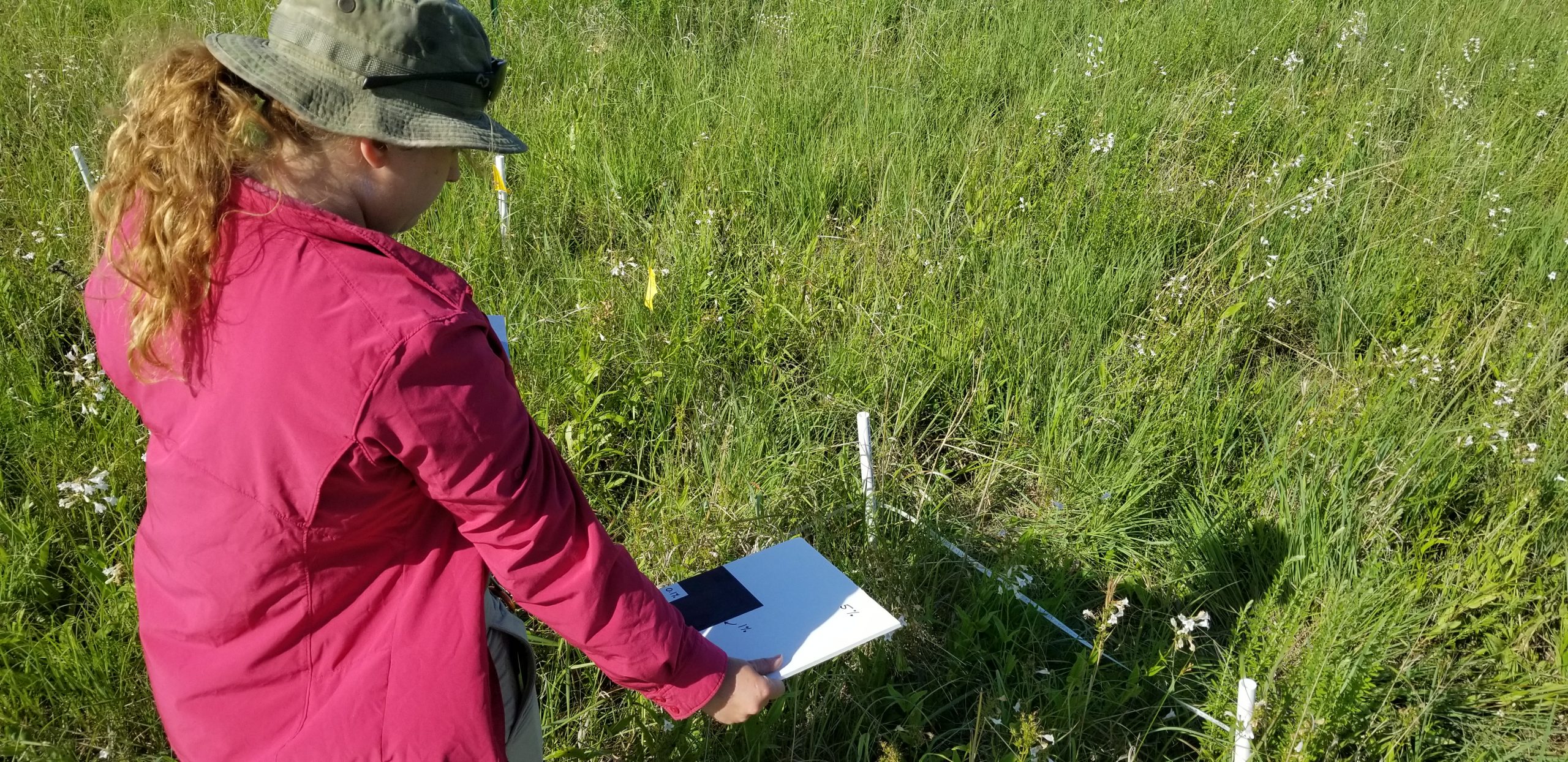
As long as she can remember, Abigail Urban has been interested in plants. Plants, she said, “are everywhere and often overlooked, but they play so many important roles ecologically and culturally. Human civilization has been shaped by the availability of certain plant species and I find that fascinating. Finally, learning about plants and knowing their names opens up the world, and you see it differently.” Last fall, Abigail was in the third and final year of her master’s program working with Dr. Greg Houseman, Associate Professor of Biology at Wichita State University and co-plant team leader for the Kansas NSF EPSCoR RII Track-1 Award OIA-1656006: Microbiomes of Aquatic, Plant, and Soil Systems across Kansas (MAPS). Her MAPS research project is titled, Where have you bean? Restoration of legumes across a precipitation gradient in Kansas and she explains her research as follows:
Background/Question/Methods
Legumes play important roles in grasslands and other nutrient-limited ecosystems by fixing atmospheric nitrogen, facilitating nutrient cycling, and increasing species diversity. For these reasons, legumes are commonly used in seed mixes to restore degraded grasslands; however, the historical distribution and abundance of native legumes are not well understood. We collected vegetation data across the longitudinal precipitation gradient (450-1100 mm annually) in Kansas from 108 Conservation Reserve Program (CRP) sites that were replanted with native species and compared them to 4 native reference sites that had never been plowed. We hypothesized that legume species richness and abundance would be positively related to annual precipitation on native and restored CRP sites. Additionally, we tested whether there was a positive relationship between legume abundance and plant species richness.
Results/Conclusions
Preliminary results suggest that legume species richness and abundance were similar between restored CRP and native reference sites at the lowest annual precipitation levels. In contrast, legume richness increased substantially with annual precipitation on native reference sites but remained largely unchanged on the restored CRP sites leading to a significant disparity at the highest levels of annual precipitation. This disparity was unexpected given that grasses and non-leguminous forbs increased with annual precipitation on both restored CRP and native reference sites. Legume abundance was positively correlated with annual precipitation, but this relationship was weak and did not differ between restored and native reference sites. Total richness was not correlated with legume abundance regardless of annual precipitation. Although additional native reference sites are needed, our results suggest that as precipitation increases, restoration of legume species on CRP is much lower than expected and these restored CRP sites may not be representative of native prairies.
What she liked most about her research project was “traveling from one Kansas state border to the other and learning about these different, unique plant communities.” Learning how to design and implement an experiment as well as analyze data was also a highlight of her research experience .
Abigail is originally from Wichita, Kansas, and completed a Bachelor of Arts in Human Ecology with a focus in botany at the College of the Atlantic in Bar Harbor, ME. The title of her senior Thesis was Factors Influencing Alpine Plant Communities in Baxter State Park (2014), and she was supervised by Dr. Nishanta Rajakaruna who is currently an Associate Professor of Biology at Cal Poly, San Luis Obispo, CA. Prior to being a graduate assistant, Abigail was a Field Botany Lead Technician for the NSF National Ecological Observatory Network (NEON). During her academic career, she was awarded the Claud L. Sheats, Jr. Environmental Science Endowed Fellowship (2019) and the Great Plains Nature Center Eco-meet Scholarship (2009). In addition, she co-authored with Mittelhauser, G. H., Dickenson, M., and Rajakaruna, N., a publication titled The Alpine Vascular Flora of Baxter State Park, ME, USA (Rhodora 119: 119-131, 2017). Abigail attended the Kansas Natural Resources Conference, the Kansas Academy of Sciences Annual Meeting, the Graduate Research and Scholarly Projects Symposium, the Seeds of Success (SOS) Training Workshop, the North Carolina Botanical Gardens Conference, the Janet Meakin Poor Symposium, the Conservation Land Management (CLM) Workshop, the Chicago Botanic Gardens Conference and the Josselyn Botanical Society Summer Meeting. She participated in poster sessions at the Kansas Academy of Sciences Annual Meeting, the Graduate Research and Scholarly Projects Symposium, Northeast Undergraduate Research and Development Symposium Poster, and gave lightning talks at the 2019 MAPS Science Meeting and 2020 MAPS Annual Research Symposium.
Abigail graduated in December 2020 and her future plans include “working in conservation and ecological fields either for federal, state, or private organizations.” However, she added, “I could also see myself becoming a teacher to teach students about the importance of the sciences and ecology in a world that is increasingly disconnected from the ecological world.”
